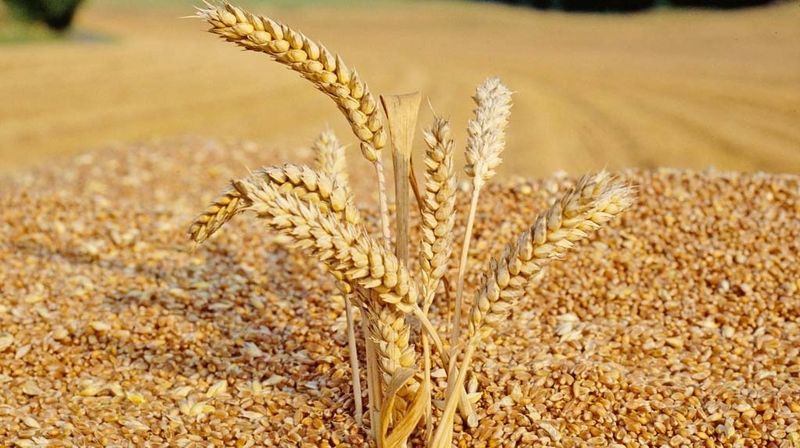Global warming is endangering wheat – study

Although wheat is a staple crop that provides a fifth of the world population’s caloric and human protein intake and is essential for human and livestock diets, these plants are continuously preyed upon by insects that feed on it and cause significant losses in yield.
In addition, the gradual increase in global temperatures has promoted the expansion of pest populations to new regions as well as their reproduction rate.
“It is of the utmost importance to rigorously explore natural plant defense mechanisms and traits that we could breed back into cultivated wheat to protect them against insects, instead of using harmful pesticides, which do not even work that well,” said Prof. Vered Tzin of the French Associates Institutes for Agriculture and Biotechnology of Drylands, one of the Jacob Blaustein Institutes for Desert Research at Ben-Gurion University of the Negev.
A most serious threat to wheat are aphids – tiny bugs that suck out the wheat’s nutrients and introduce deadly plant viruses. There are about 5,000 different species of aphids all over the world, and the bird cherry-oat aphid (Rhopalosiphum padi, which is not a bird) is one of the world’s most destructive insect pests against wheat production.
“Now that we know which gene controls its production, we can generate improved cultivated wheat with the same self-defense capabilities.”
Prof. Vered Tzin
To reduce aphid damage, wheat plants have evolved various chemical and physical defense mechanisms. Although these mechanisms have been frequently reported, much less is known about their effectiveness.
Tzin, who studies the wild emmer wheat that has long been found in the Fertile Crescent and is a progenitor of both durum (pasta) and bread wheat, discovered that wild wheat has at least two defense methods against insect pests.
First, it has a coating of “hairs” that prevent insects from finding a place to burrow into the stalk. This could potentially be bred back into cultivated wheat to protect it. Second, wheat produces a poison – a phytochemical called benzoxazinoid – that discourages bugs from eating the wheat.
Doctoral student Zhaniya Batyrshina from Tzin’s lab is the first to have isolated the gene that controls the production of this poison.
“Now that we know which gene controls its production, we can generate improved cultivated wheat with the same self-defense capabilities,” she said.
Batyrshina and her colleagues’ findings were published recently in the peer-reviewed Journal of Experimental Botany under the title, “The transcription factor TaMYB31 regulates the benzoxazinoid biosynthetic pathway in wheat,” and Frontiers in Plant Science under the title, “The Effectiveness of Physical and Chemical Defense Responses of Wild Emmer Wheat Against Aphids Depends on Leaf Position and Genotype.”
Tzin holds the Sonnenfeldt-Goldman Career Development Chair for Desert Research and is a member of the Goldman-Sonnenfeldt School of Sustainability and Climate Change.
“Wheat is an essential staple for so many, and we must do all we can to safeguard this critical crop from loss by insects and disease,” she said.
Additional researchers included her students, Reut Shavit, Anuradha Singh and Beery Yaakov, as well as Samuel Bocobza of the Volcani Center, Hanan Sela from the University of Haifa and Brian Dilkes from Purdue University.
Read also
Wheat in Southern Brazil Impacted by Dry Weather and Frosts
Oilseed Industry. Leaders and Strategies in the Times of a Great Change
Black Sea & Danube Region: Oilseed and Vegoil Markets Within Ongoing Transfor...
Serbia. The drought will cause extremely high losses for farmers this year
2023/24 Safrinha Corn in Brazil 91% Harvested
Write to us
Our manager will contact you soon



